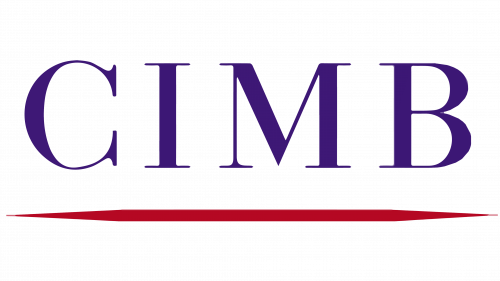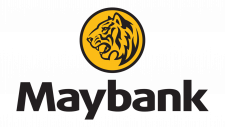CIMB Logo
Commerce International Merchant Bankers Berhad, known as CIMB, is a leading Malaysian financial entity renowned in Southeast Asia. Established in 1974, it initially focused on investment banking, gradually evolving into a universal bank. CIMB is pivotal in advancing Malaysia’s financial landscape, offering diverse services including retail, commercial, and Islamic banking. Its strategic expansions and innovative approaches, especially in digital banking, have fortified its presence in ASEAN and beyond. CIMB’s commitment to sustainable development and customer-centric services underscores its status as a major financial player in the region.
Meaning and history
Founded in the vibrant heart of Kuala Lumpur in 1974, Commerce International Merchant Bankers Berhad, widely recognized as CIMB, embarked on a journey to redefine banking in Southeast Asia. Initially carving its niche in investment banking, CIMB quickly adapted to the evolving financial landscape, extending its services to encompass corporate banking, setting a foundation for expansive growth.
Throughout the 1980s and 1990s, CIMB distinguished itself by diversifying its offerings. It ventured into new territories like underwriting and financial advisory, marking its transition towards a comprehensive banking institution. This era of expansion was characterized by strategic alliances and a thrust into regional markets, establishing CIMB as a burgeoning financial player.
The turn of the millennium heralded a transformative phase for CIMB, highlighted by its merger with Bank Bumiputra-Commerce Holdings Berhad in 2006. This pivotal move catapulted CIMB into the realm of retail banking, substantially enlarging its footprint in the financial sector. The acquisition of Southern Bank Berhad further entrenched its position, expanding its retail network and enriching its customer portfolio.
In the 2000s, with an eye on regional dominance, CIMB aggressively expanded across ASEAN, setting up operations in strategic markets including Indonesia, Singapore, and Thailand. This not only diversified its operational landscape but also catered to a wider spectrum of banking needs across cultures and economies.
CIMB has consistently embraced technological advancements, pioneering in digital banking innovations. This commitment to technology revolutionized the way it interacts with customers, enhancing accessibility and operational efficiency, and cementing its status in a digitally-driven world.
Facing global economic upheavals with resilience, CIMB has navigated through financial turbulences, continually adapting and evolving. Its dedication to sustainable banking and the economic upliftment of the ASEAN region underscores its ethos.
As a beacon of banking excellence in ASEAN, CIMB’s narrative is not just about its growth but also about the economic dynamism and potential of Southeast Asia.
What is CIMB?
Commerce International Merchant Bankers Berhad, widely known as CIMB, is a trailblazing financial institution headquartered in Kuala Lumpur, Malaysia. It stands out in the ASEAN region for its comprehensive range of banking services, including investment, retail, and Islamic banking, underpinned by a strong commitment to digital innovation and regional economic development. CIMB’s journey from a merchant bank to a banking powerhouse reflects its adaptability and forward-thinking approach in the ever-evolving financial landscape.
1986 – 1990s
Central to the logo are the letters “CIMB,” uniquely stylized to convey the brand’s identity. The “C” and “M” are prominently large, commanding attention and symbolizing the bank’s strength and stability. Contrasting these, the “i” and “b” are smaller, providing a visual balance and emphasizing approachability and attention to detail. This typographic choice creates a dynamic interplay between strength and accessibility, reflecting CIMB’s commitment to both corporate robustness and individual customer care. The boldness of the letters suggests confidence and reliability, key attributes in the banking industry. The color scheme of the logo, although not specified here, likely plays a significant role in its overall impact, aligning with the bank’s corporate identity and values. The typography is modern and clean, indicating CIMB’s forward-thinking approach and adaptation to contemporary banking needs. Overall, the logo effectively merges simplicity with sophistication, making it easily recognizable and memorable.
1990s – 2006
The logo consists of the acronym “CIMB” arranged in a horizontal line. The letters are depicted in a bold, serif font that suggests a sense of solidity and traditional values. Each character is capitalized. The color of the letters is a deep, royal purple, conveying a sense of luxury, wisdom, and dignity.
Beneath the main text, there is a thin, horizontal line. The line starts and ends in alignment with the text above but extends slightly beyond the letter “B” on the right side. This line is colored in a rich, crimson red, providing a stark and visually striking contrast to the purple. The red may symbolize action, energy, and passion, which complements the stately purple and adds a dynamic element to the logo’s overall appearance.
Overall, the logo’s design is straightforward yet carries a weight of professionalism and reliability. The contrast between the purple and red against the white background makes it eye-catching, while the simplicity of the design ensures it is easily recognizable and memorable.
2006 – 2010
The logo showcases the acronym “CIMB” in a bold, sans-serif typeface, projecting a modern and efficient image. The letters are uniform in size and capitalized, promoting equality and stability within the brand. They are colored in a deep navy blue, a hue often associated with trust, professionalism, and reliability.
Next to the text there is a graphic element inside a blue square there are two parallelograms. The upper parallelogram is white, while the lower is blue. This geometric figure can be interpreted as a stylized arrow pointing to the right, symbolizing progress, direction, and forward-thinking.
Compared to the previous logo, there are notable changes. The serif font has been replaced with a sans-serif font, suggesting a shift from traditional to modern. The royal purple and red colors have been replaced entirely with shades of blue, likely to embody a more corporate and conservative feel. The thin red line is no longer present.
The background remains white, maintaining the clarity and simplicity, allowing the blue elements to stand out sharply. This design evolution reflects a company that is adapting to contemporary times while maintaining its foundational strengths. The overall effect is one of a refreshed identity that respects the company’s past but looks confidently to the future.
2010 – Today
Transitioning from the previous iteration, this logo has undergone a significant color shift from navy blue to maroon red. The navy blue conveyed professionalism and reliability, while the new maroon hue imparts warmth and vitality, suggesting a more passionate and energetic brand personality.
The typeface remains unchanged, preserving the continuity of the brand’s visual identity. However, the change from cool to warm colors dramatically alters the logo’s visual impact. The use of maroon red could potentially be aimed at making the logo more noticeable and memorable in various applications.
The new color choice marks a departure from the conservative blue to a more assertive and dynamic red. The white background is consistent, ensuring that the maroon elements command attention.















